Summer Lesson Plan
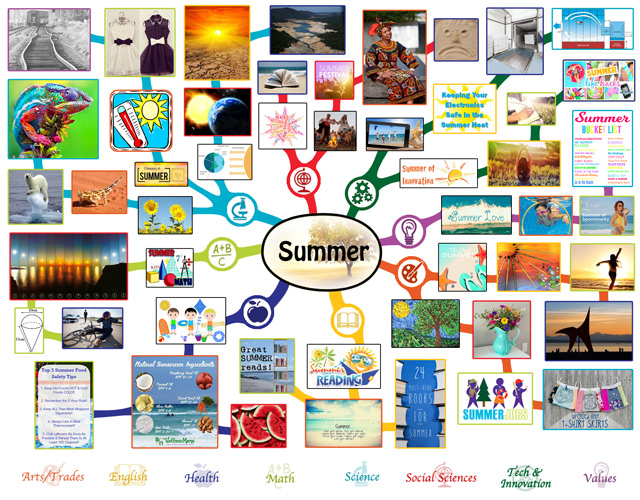
Lesson Plan Mindmap for Summer ” Click to Enlarge
CLICK ICONS TO JUMP DIRECTLY TO EACH SUBJECT ON THIS PAGE








SUMMER LESSON PLAN
This page is a free-shared lesson plan archive for teaching all educational subjects within the context and theme of “Summer”. It is purposed for use in community education environments, homeschool environments, traditional schooling environments, or as a supplemental and fun addition to any education program. As part of the complete Education for Life Program, this lesson plan is specifically designed to work in conjunction with the other components: Foundations of Teaching, Curriculum, Teaching Strategies, Learning Tools and Toys, Evaluation Model, and The Ultimate Classroom. If you’d like to learn how all these components work together, click here. Click here for the specifics focused on just using the lesson plans:
CLICK HERE FOR A DETAILED TUTORIAL ON HOW TO USE THIS LESSON PLAN
NOTE: The colors are provided as a possible linear progression (red/easiest to violet/most challenging) for people that might prefer a more linear structure. Our core philosophy, however, is that through creativity every color can be made easy or challenging for any learning level.
RELATED PAGES (mouse-over for descriptions and click for complete pages)
EDUCATION OVERVIEW | HOW TO USE THIS COMPONENT | OUR OPEN SOURCE PURPOSE


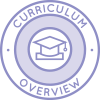
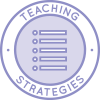
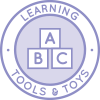
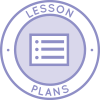
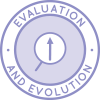
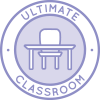
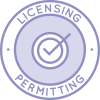

WAYS TO CONTRIBUTE TO EVOLVING THIS EDUCATION PROGRAM WITH US
SUGGESTIONS | CONSULTING | MEMBERSHIP | OTHER OPTIONS
A NOTE ABOUT ALL ONE COMMUNITY LESSON PLANS
The One Community lesson plans are intentionally designed for use in ANY educational environment and with ALL educational, cultural, religious/spiritual, and philosophical approaches to teaching and learning. They are designed without an ideological approach and specifically so they can be adapted to include the views, preferences, methodologies, and/or ideologies preferred by different parents and teachers.
For maximum flexibility and adaptation, they are also designed to be combined to teach multiple subjects at the same time. Doing this increases the creativity, effectiveness, and fun of your learning environment. Once we are on the property and operating our version of the complete school and Education for Life program, we will be adding video examples of how to combine the lessons. In the meantime, visit the Teaching Strategies page for a list of suggestions.
ARTS AND TRADES
CLICK HERE FOR THE COMPLETE SUBJECT OUTLINE FOR ARTS & TRADES
 | TEACHING ARTS AND TRADES WITHIN THE CONTEXT OF SUMMER |

| The Arts- Draw a picture* of a sunny summer day, and color it in with any type of medium (crayons, paints, markers, for example) you wish that most reminds you of summer. Talk about your choices.
- Using newspaper and magazines, cut out pictures that represent summer to you. Create a collage*.
- Choose a medium and a base material that reminds you of summer, and use them to create a picture* that shows what the season Summer means to you.
- Create a paper mache art piece* of an insect or animal found in your area that reminds you of the summer.
- Create a dance* showing how summer makes you feel.
- Write a song* about what summer (or summer holidays) means to you, based on pre-existing music (if you create lyrics for it) or with music you compose yourself, with or without lyrics.
- Find a nice spot on a summery day, and sketch or paint* what you see when sitting in that spot.
- Create a summer themed sculpture*.
- Create an interactive, multimedia piece* with a theme related to Summer.
|

| Trades- Collect some summer blooming wildflowers and create a summer-themed pressed-flower greeting card* or bookmark.
- Collect some summer wildflowers and make a floral display*.
- Collect some wildflowers and create a summer-themed pressed-flower greeting card or bookmark.
- Using sewing, upcycle some old clothing or scraps of cloth to create a summer-themed pillow or article of clothing*.
- Make a list of 20 ‘summer jobs’. Rank them in the order of what you think you would be most interested to try or learn about. Do research on the top 5, including a short interview with a person that has worked in that position, and create a 5-10 page report* about your findings, comparing and contrasting the positions. Then, if possible, arrange to spend a half to full day visiting a place that offers that type of position and learning more about it and include your experience in your report.
- Using sewing, upcycle some old clothing to create a new summer piece*.
- Create a summer themed paper mache pinata* for a summer barbeque, party or other gathering.
- Create at least 5 different styles of kites* that are summer themed and can fly. Take it out and let some community or neighborhood children have a try. If possible, have an informal workshop/demonstration where you can show children how to make their own kites at home (or at your workshop).
|
| CLICK HERE TO EMAIL US IF YOU HAVE AN IDEA TO ADD TO THIS SECTION |
* Please note that anything with an asterisk is just a suggestion. The diversity of options with asterisks are interchangeable and purposed to stimulate your own ideas. Any one of these suggestions could be replaced with a written paper, any form of art project (drawing, painting, music, paper mache, clay, wood, knitting/embroidery, metals, etc. etc.), an experiment, a presentation, a mindmap, a computer program, a web design project, a piece of poetry or a song, an interpretive dance or play, a group project, or anything else. What we feel is most important is that both the Learner and the Teacher agree on an exercise/activity they both feel would be maximally engaging, fun, and effective. If you come up with an idea we haven’t already thought of, please share it with us.
ENGLISH
CLICK HERE FOR THE COMPLETE SUBJECT OUTLINE FOR ENGLISH
Note: Any language can be substituted for English. The subject is listed here as “English” because that is the primary language of most of the people on the team, and the official language of the country we’re building our initial location in.
 | TEACHING ENGLISH WITHIN THE CONTEXT OF SUMMER |

| - Find a short poem or passage about summer, and practice reading it out loud* to at least 3 people.
- Find a short poem, riddle or story about summer. Practice reading it out loud, and then memorize it. Recite* it to others from memory.
- Read a short story set in the summer. Write an analysis* of this story, including main themes, a summary and other elements.
- Find at least two summer poems, and use them as examples in a written discussion* on how tone or meaning is conveyed in poetry. (for example, through word choice, figurative language, sentence structure, line length, punctuation, rhythm, repetition, and rhyme)
- Locate a book which is set in the summer and at least one summary of this book by others. Compare the original text to a summary to determine whether the summary accurately captures the main ideas, conveys the underlying meaning and includes important details. Write a report*.
- Write a narrative analysis* of a piece of historical or classical fiction set, at least partially, in the summer appropriate for your reading level. Include information about the philosophical, political, religious, ethical, and social influences of the historical period that shaped the characters, plots, and settings.
- Write and publish an open source analysis* of either print, digital or television media in the summer season, and how to recognize strategies used by the media to inform, persuade, entertain, and transmit culture (for example, advertisements, perpetuation of stereotypes, language used).
- Write a literary work* in your chosen genre, either set in summer or with summer as a major theme.
- Choose one literary work set at least partially in the summer, and lead an analytical discussion* with a group of others who also read the work. Use at least two different genre theories comparing and contrasting these theories and their resulting analytical points.
|
| CLICK HERE TO EMAIL US IF YOU HAVE AN IDEA TO ADD TO THIS SECTION |
* Please note that anything with an asterisk is just a suggestion. The diversity of options with asterisks are interchangeable and purposed to stimulate your own ideas. Any one of these suggestions could be replaced with a written paper, any form of art project (drawing, painting, music, paper mache, clay, wood, knitting/embroidery, metals, etc. etc.), an experiment, a presentation, a mindmap, a computer program, a web design project, a piece of poetry or a song, an interpretive dance or play, a group project, or anything else. What we feel is most important is that both the Learner and the Teacher agree on an exercise/activity they both feel would be maximally engaging, fun, and effective. If you come up with an idea we haven’t already thought of, please share it with us.
HEALTH
CLICK HERE FOR THE COMPLETE SUBJECT OUTLINE FOR HEALTH
 | TEACHING HEALTH WITHIN THE CONTEXT OF SUMMER |

| - Think of at least five healthy fruit and vegetables available in the summer, and find out what vitamins they contain. Make a table*.
- Think of at least two insects which may bite or sting you in the summer, and find out how to prevent these bites or stings. Draw a cartoon* showing what you have learned.
- Create a visual representation* showing what causes sunburns and how to prevent them.
- Find out the ingredients in your favorite summertime salad or dish and list all the health benefits of each of the healthy ones. Create a visual representation*.
- Self love is important, and part of this is loving one’s own body despite what advertisers and pop culture have us believe is a “beach ready” or “bikini” body. Find some affirmations, meditations and other resources that promote self-love to help fight negative messages about bodies. Write a document* about whether or not these resources work for you.
- Write a short report* about the causes of dehydration – especially in the summer – the symptoms, prevention and what to do in case of dehydration.
- If you have a favorite summer sport, or one you would like to learn, go do that sport, and then create a photo collage* of some pictures you asked others to take of you doing that sport. Also write a short piece* about how you started doing that sport, how it makes you feel, the challenges you met and overcame, etc.
- Due to popularity of picnics and barbeques in the summer, it is important to be aware of food poisoning. Write pamphlet or booklet* showing your knowledge of what food poisoning is, how to prevent it (especially in the summer) and what to do if one has food poisoning.
- It is nice to be outside in the summer. Try going for walks, hikes or doing other outdoor activities in the summer at least once a day for a week. Write a short, reflective piece* about your experiences and how they made you feel.
- Research how to be a positive influence on children, and see if you can apply what you have learned when doing your sport at the local area for that sport. Write a short document* about what you found in your research, what your actual experiences were and your reflections.
- Research how to be a positive influence on children, and see if you can apply what you have learned when children approach you in public when doing/promoting a summer activity. Write a short document* about what you found in your research, what your actual experiences were and your reflections.
- Videotape an informational and/or persuasive documentary* about those people who appear to be socially isolated to you, such as elderly persons and others sitting or walking alone, compared to the majority of people that are outdoors in public places in the summer. If they are interested, strike up a conversation discussing feelings and reasons for their isolation.
|
| CLICK HERE TO EMAIL US IF YOU HAVE AN IDEA TO ADD TO THIS SECTION |
* Please note that anything with an asterisk is just a suggestion. The diversity of options with asterisks are interchangeable and purposed to stimulate your own ideas. Any one of these suggestions could be replaced with a written paper, any form of art project (drawing, painting, music, paper mache, clay, wood, knitting/embroidery, metals, etc. etc.), an experiment, a presentation, a mindmap, a computer program, a web design project, a piece of poetry or a song, an interpretive dance or play, a group project, or anything else. What we feel is most important is that both the Learner and the Teacher agree on an exercise/activity they both feel would be maximally engaging, fun, and effective. If you come up with an idea we haven’t already thought of, please share it with us.
MATH
CLICK HERE FOR THE COMPLETE SUBJECT OUTLINE FOR MATH
 | TEACHING MATH WITHIN THE CONTEXT OF SUMMER |

| - For one month in the summer, write down the time of sunrise and sunset once a week. You may use Internet resources to find out these times. Draw clock faces* and indicate the times on separate clocks.
- Create at least four summer-themed word problems* involving a combination of fractions, multiplication and division. This can include, for example, converting currency for a summer vacation, real/fictional pocket money earned from doing chores or running errands for others, time spent at the park or beach or amount of ice cream eaten.
- Measure or obtain the measurements of at least five summer swimming areas, and determine their volume. Make a chart* of the results.
- Create at least six summer-themed word problems* involving cylinders, cones and spheres. Look around you for real-world inspiration and see if you can solve your problems (e.g. ice cream cones, beach balls).
- Explore seasonal data that shows certain changes in the summer months (e.g. ice cream stands having more business) and see if you can find or create a linear model. Explain your linear model in a short essay*.
- Create a graph and report* showing your knowledge of probabilities by exploring and explaining the certain accident rates that increase or decrease in the summer.
- Explore a violet level subject related to summer. Write and present a thesis* on your subject matter.
|
| CLICK HERE TO EMAIL US IF YOU HAVE AN IDEA TO ADD TO THIS SECTION |
* Please note that anything with an asterisk is just a suggestion. The diversity of options with asterisks are interchangeable and purposed to stimulate your own ideas. Any one of these suggestions could be replaced with a written paper, any form of art project (drawing, painting, music, paper mache, clay, wood, knitting/embroidery, metals, etc. etc.), an experiment, a presentation, a mindmap, a computer program, a web design project, a piece of poetry or a song, an interpretive dance or play, a group project, or anything else. What we feel is most important is that both the Learner and the Teacher agree on an exercise/activity they both feel would be maximally engaging, fun, and effective. If you come up with an idea we haven’t already thought of, please share it with us.
SCIENCE
CLICK HERE FOR THE COMPLETE SUBJECT OUTLINE FOR SCIENCE
 | TEACHING SCIENCE WITHIN THE CONTEXT OF SUMMER |

| Life Sciences- Go outside in the summer and spot animals/ insects and plants. List* the five wild animals and insects you have spotted this summer that you would not see in winter, and then find out one thing they each do in the summer.
- Write a page-long report*, with pictures, about one animal (or group of animals) that lives in the desert and its adaptations to hot, summer-like temperatures.
- Choose 3 animals that have summer as their breeding season and create a digital poster* about these animals and their breeding season.
- Explore how increasing summer temperatures in some areas have been negatively affecting at least 3 species of your choice and write a short report*.
- Explore how increased summer temperatures in some areas have been increasing the population of 3 species considered pests and write a short report*.
- Explore how certain species have adapted to extreme summer temperatures. Write a short essay*.
- Explore biodiversity at a local or global level as related to increasing temperatures in that area and extreme summer temperatures. Write a well documented research paper* Include your opinion on the issues in a forward.
- Write an in-depth set of open source lesson plans* about Biology in relation to summer that include lessons for all ages.
|

| Physical Sciences- Put some ice cubes outside in the summer and watch what happens to them. Make a picture* of what you saw and explain why you think this happens. Then learn about what happens and add anything to the picture that you think helps show what you learned.
- When a thermometer is put outside in the summer, the mercury will rise and show the temperature. Find information to learn about this, then discuss* what happens with a group of your peers.
- Think about what materials are hotter when left outside on a sunny, summer day. Research this and explain why.
- Write a short piece* explaining what type of clothing one should wear in the summer (for example, whether one should wear black or white, and what types of materials are beneficial in different areas and conditions in the summer).
- Write a 3 to 5 page report* explaining the physics and experience of mirages, which are typically associated with and occur on hot summer days.
- Create a project* demonstrating your knowledge of thermal expansion in at least three types of building material for which summer heat is a problem. Include information on how engineers work around this.
- Using previous research as references, make a videotaped presentation* demonstrating your knowledge of thermal expansion and how entire structures are engineered to withstand summer temperatures.
|

| Earth Sciences- Look at a picture of the Earth’s position relative to the Sun’s during the summer season, and try to make a copy* using pencil and other materials.
- Look at a picture of the Earth’s position relative to the Sun’s during the four seasons. Explain in at least six written sentences*, the Earth’s position, What the weather is like in the Summer, and whether the daylight hours longer or shorter.
- Using figures and text in a short report*, explain how hotter summers are leading to drought.
- The year 1816 was known as the “year without a summer” and included the 1815 eruptions of the Tambora volcano in Indonesia. Write a 5 to 10 page analysis* on why this occurred and why 1816 got the name it did.
- Write an essay* exploring why we now use the term “climate change” instead of “global warming” and some ways climate change is ruining summer in some areas of the world.
- Research how the summer season affects lakes, including thermal stratification and mixing, and study additional summer related aspects which interest you. Create a visual presentation* on what you learn and display it in the education center of your community.
- Create a videotaped documentary* exploring if and how higher temperatures in the summer affects an area of Earth Sciences (e.g. Climatology, Glaciology, Oceanology). Show your stance on the issues. Open source your video on the internet.
|
| CLICK HERE TO EMAIL US IF YOU HAVE AN IDEA TO ADD TO THIS SECTION |
* Please note that anything with an asterisk is just a suggestion. The diversity of options with asterisks are interchangeable and purposed to stimulate your own ideas. Any one of these suggestions could be replaced with a written paper, any form of art project (drawing, painting, music, paper mache, clay, wood, knitting/embroidery, metals, etc. etc.), an experiment, a presentation, a mindmap, a computer program, a web design project, a piece of poetry or a song, an interpretive dance or play, a group project, or anything else. What we feel is most important is that both the Learner and the Teacher agree on an exercise/activity they both feel would be maximally engaging, fun, and effective. If you come up with an idea we haven’t already thought of, please share it with us.
SOCIAL SCIENCES
CLICK HERE FOR THE COMPLETE SUBJECT OUTLINE FOR SOCIAL SCIENCES
 | TEACHING SOCIAL SCIENCES WITHIN THE CONTEXT OF SUMMER |

| - Find and print out pictures of two summer festivals that take place in countries outside of your own. Show them to others and tell them* a bit about these festivals.
- Find and print out pictures of traditional clothing worn in the summer for five different cultures. Create a collage* and include at least one sentence to explain each picture.
- In many countries, the school year ends with a long summer holiday, and a new school year begins after this holiday. Write a short report* about some countries that have this tradition and some countries that have a different tradition (a school year ending and beginning in a different season, for example). You may include, for example, what children are expect to do during their holidays and/or the history of why different countries have different school-starting dates.
- Do some background reading why people love summer and then interview around 20 different people to see what they love about summer. Do not write down anyone’s names or information that would allow anyone to identify them, but do collect some basic demographic data (e.g. age range, gender). Write a short report* showing your results in graphs and charts and discussing them using what you have learned from your background reading.
- Make a slideshow presentation* comparing and contrasting at least two very different cultures in how they view summer and spend the season. For example, some people from certain cultures generally prefer to stay in the shade in the summer while others prefer to get tanned on the beach. Include historical, geographical, sociological and other information to explain what you find.
- Create a pamphlet* about the psychology of making the most of summer vacations and how one can apply this knowledge to vacations in general or even their entire lives. Include your perspective and experiences.
- Write and free share a blog* about seasonal affective disorder (SAD), summer variant, and other psychological reasons why some do not like summer. Offer advice on ways to deal with SAD.
- Choose a violet topic from the social science molecule related to summer that interests you. Research this topic and write and publish a series of at least 3 articles* based on your findings and previous research and literature.
|

| Foreign Languages
(Each of the following is to be completed in the foreign language(s) being studied)- Choose five or more words related to summer that you do not already know. Write them down in color* and decorate them with summer-related details. For example, draw a little sail on top of the word for sailboat.
- Imagine you are going on a summer vacation to a country in which your foreign language is spoken. Choose at least ten new words or phrases you would you want to know relating to summer and learn them.
- Write a couple of haiku poems* inspired by the summer season.
- Read a short story or article about summer. Underline words or phrases you do not understand and find out what they mean. Use at least ten of your new words or phrases to create a short dialogue*.
- Write a short story* that takes place in the summer.
- Read a fictional or non-fiction work about summer and write a book report*.
- Write an essay* on a topic of your choice, that is related to summer.
|
| CLICK HERE TO EMAIL US IF YOU HAVE AN IDEA TO ADD TO THIS SECTION |
* Please note that anything with an asterisk is just a suggestion. The diversity of options with asterisks are interchangeable and purposed to stimulate your own ideas. Any one of these suggestions could be replaced with a written paper, any form of art project (drawing, painting, music, paper mache, clay, wood, knitting/embroidery, metals, etc. etc.), an experiment, a presentation, a mindmap, a computer program, a web design project, a piece of poetry or a song, an interpretive dance or play, a group project, or anything else. What we feel is most important is that both the Learner and the Teacher agree on an exercise/activity they both feel would be maximally engaging, fun, and effective. If you come up with an idea we haven’t already thought of, please share it with us.
TECHNOLOGY AND INNOVATION
CLICK HERE FOR THE COMPLETE SUBJECT OUTLINE FOR TECHNOLOGY AND INNOVATION
 | TEACHING TECHNOLOGY & INNOVATION WITHIN THE CONTEXT OF SUMMER |

| Technology- Draw a picture* of one machine/gadget you especially appreciate in the summer. Discuss how it would be without that piece of technology.
- Study the screens/screening used in summer in your house and investigate online* how those type of screens are connected to windows. Discuss* your findings with a mentor.
- Research online to see how the household machine you appreciate the most in the summer works, or how to keep electronics safe in summer heat. Create a digital poster* explaining it (no need to print it out).
- Find out how the air conditioning system in one or more vehicles work (eg. car, airplane, bus). Create a digital presentation*.
- Learn about built-in window fly screens, magnetic fly screens, mosquito nets and/or related products used in 5 different countries and climates, and how they are attached to whatever they are put on to. Create a handout to share what you have learned*.
- Choose a building and research what type of system it uses to keep itself cool in the summer. Create a short report* based on what you find, including your recommendations.
- Research how chilled goods, such as ice cream, are transported in summer months, and create a visual representation* on what you learned.
- Research how live animals are transported in the hot summer months and write and publish a blog* that includes what you learned, your opinion, and recommendations.
- Research environmentally-friendly ways to keep temperatures low in homes and for comfort and food storage during warmer summer months. Create a new concept or elaborate on an existing idea and write a proposal* for a company that provides heat, electricity, and / or power.
|

| Innovation- Go outside and find a plant growing outside. Find a flower or leaf, and focus on it for at least one minute. See if you can notice anything that you hadn’t noticed about the flower or leaf before. Make a note or draw a picture*.
- Sit inside and close your eyes for at least one minute. Observe thoughts or visuals that go through your head. Make a list of these. Then go outside on a nice summer day and find a nice place to sit down. Again, close your eyes for at least one minute and make a note of thoughts or visuals that go through your head. Make another list. Then write about* the similarities and differences between the two lists. Discuss this with a mentor.
- Go into a garden, park or forest. Make a note of things you feel with your senses as you walk. Notice what the ground feels like below your feet. Notice how the sun feels on your skin. Find a way to share* what you experienced with others.
- Bring a sketchbook and pencils with you and sit somewhere nice outside. Sketch some scenes*.
- Bring a journal and writing material with you and sit somewhere nice outside. Do some stream of consciousness writing* (interior monologue).
- Visit or create an outdoor cinema or theatrical performance in the summer. Note your observations about yourself, others, and the systems used (lighting, sound, etc.) and how the summer weather did and/or could affect the experience. Write ideas and recommendations* you may have to improve the experience.
- Brainstorm a list of lifehacks related to summer, or things you feel need life hacks in the summer. Do some research online on existing lifehacks and then create your own lifehack or list* of lifehacks that you didn’t see already listed.
- Do some research on permaculture and then either visit someone else’s system or try to set up your own. Make a list* of challenges and opportunities that summer brings to the system. Use this list to research and create solutions for the opportunities, and create a manual* of ways to improve the system in the summer. Apply your ideas or have others apply your ideas, and record changes and results.
|
| CLICK HERE TO EMAIL US IF YOU HAVE AN IDEA TO ADD TO THIS SECTION |
* Please note that anything with an asterisk is just a suggestion. The diversity of options with asterisks are interchangeable and purposed to stimulate your own ideas. Any one of these suggestions could be replaced with a written paper, any form of art project (drawing, painting, music, paper mache, clay, wood, knitting/embroidery, metals, etc. etc.), an experiment, a presentation, a mindmap, a computer program, a web design project, a piece of poetry or a song, an interpretive dance or play, a group project, or anything else. What we feel is most important is that both the Learner and the Teacher agree on an exercise/activity they both feel would be maximally engaging, fun, and effective. If you come up with an idea we haven’t already thought of, please share it with us.
VALUES
CLICK HERE FOR THE COMPLETE SUBJECT OUTLINE FOR VALUES
 | TEACHING VALUES WITHIN THE CONTEXT OF SUMMER |

| - Draw a picture of and talk about* 3 things you think make summer valuable/important to you.
- Think of a summer activity you think would be valuable to learn. Go practice or try it. Have someone take pictures of you and create a scrapbook page* of you doing that activity.
- Go outside and document* what you value about summer, in whatever way you would like (for example: a collage, slideshow of photographs, painting).
- Summer is the perfect time to see how much you value spontaneity, so leave blocks of time unplanned and spontaneously decide what you will do outdoors by yourself and/or with others. Create a report* including pictures on your experience specifically paying attention to how much you valued or did not value being spontaneous in summer.
- Find somethings you are curious about that you see outside in the summer, whether it be something to do with nature or how people behave. Create a list* of 20 summer things you got curious about and then went to learn more about, and make a multi-media presentation* on what you learned.
- Practice being proactive this summer by planning excursions and outings, anticipating possible challenges and planning ahead to either avoid them or deal with them. Create a flowchart* showing all the possibilities you foresaw and indicate what actually happened when you went on your excursion or outing.
- Choose a fear of yours related to the summer, and research how to overcome that fear in a safe way (for example: fear of touching slugs, fear of swimming in the lake). Challenge yourself to overcome this fear in a fun way. Keep a journal* about what you planned and what took place, including your feelings and how you overcame the fear. Publish* your journal online or in a magazine intended to help others.
|
| CLICK HERE TO EMAIL US IF YOU HAVE AN IDEA TO ADD TO THIS SECTION |
* Please note that anything with an asterisk is just a suggestion. The diversity of options with asterisks are interchangeable and purposed to stimulate your own ideas. Any one of these suggestions could be replaced with a written paper, any form of art project (drawing, painting, music, paper mache, clay, wood, knitting/embroidery, metals, etc. etc.), an experiment, a presentation, a mindmap, a computer program, a web design project, a piece of poetry or a song, an interpretive dance or play, a group project, or anything else. What we feel is most important is that both the Learner and the Teacher agree on an exercise/activity they both feel would be maximally engaging, fun, and effective. If you come up with an idea we haven’t already thought of, please share it with us.
OTHER RESOURCES
We're building a resource section. Click here if you have a suggestion or resource for this page.
OPEN SOURCE SUBJECT RESOURCES (click icons for complete pages)



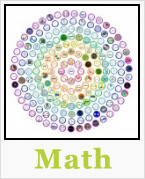



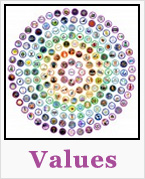
OPEN SOURCE CURRICULUM OUTLINES (click image for summaries and links to complete pages)
CARE
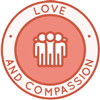
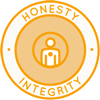


SHARE
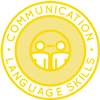
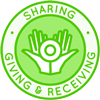

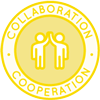
PLAY
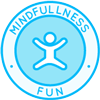
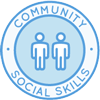
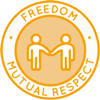

OPEN SOURCE TEACHING METHODOLOGY SUMMARIES
Montessori | Waldorf | Orff | Reggio | Multi-Intelligence | Bloom's Taxonomy | Study Tech | I-WE
INDEX OF ALL THE ONE COMMUNITY OPEN SOURCE LESSON PLANS

Click this image for the Lesson Plans for Life page with links to the rest of the lesson plans
THE WORLD'S LARGEST ONLINE FREE EDUCATION RESOURCE ARCHIVE
RELATED CONTENT AND OTHER RELATED RESOURCES
We're building this resource section. Click here if you have a suggestion or resource for this page.
























 One Community
One Community




